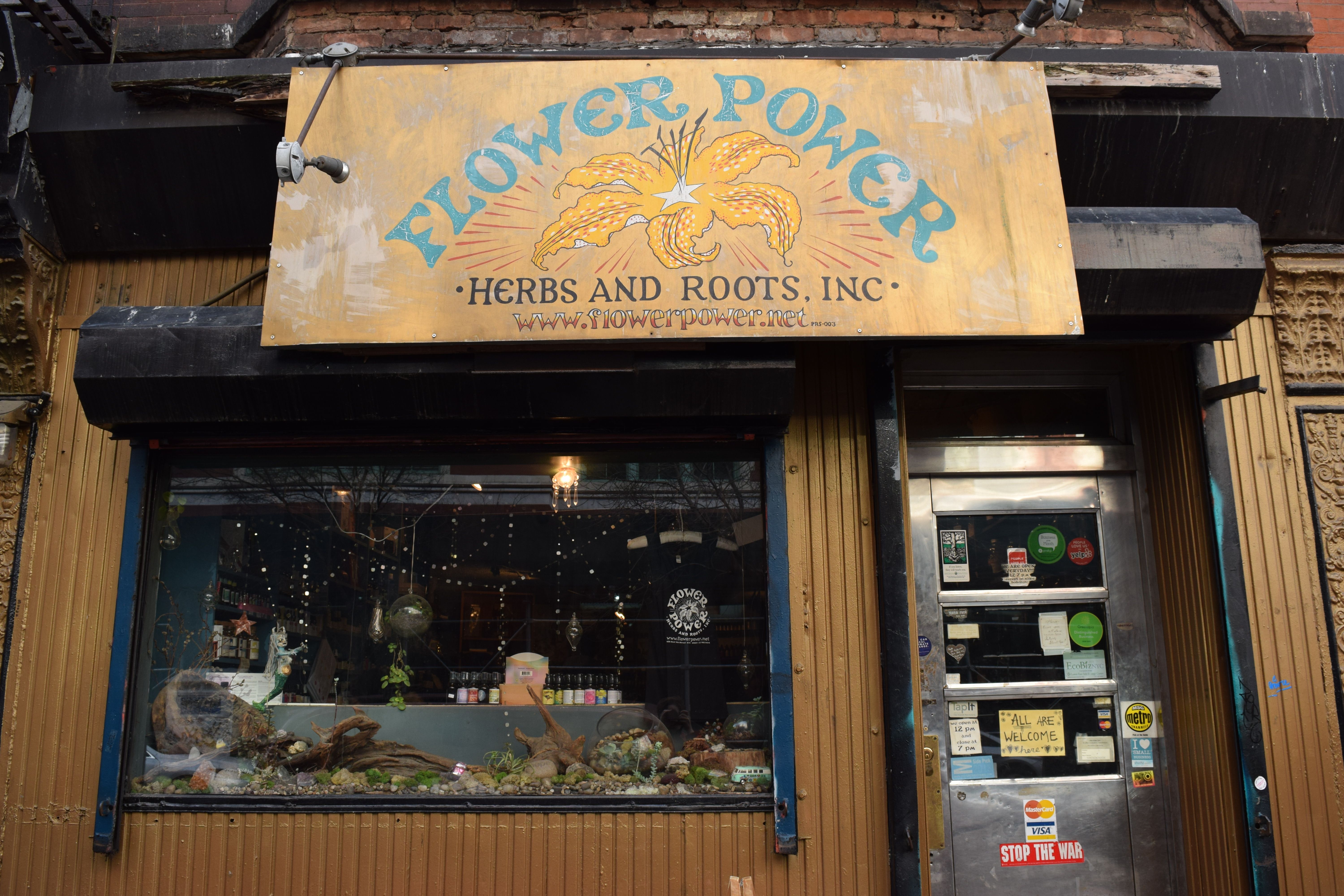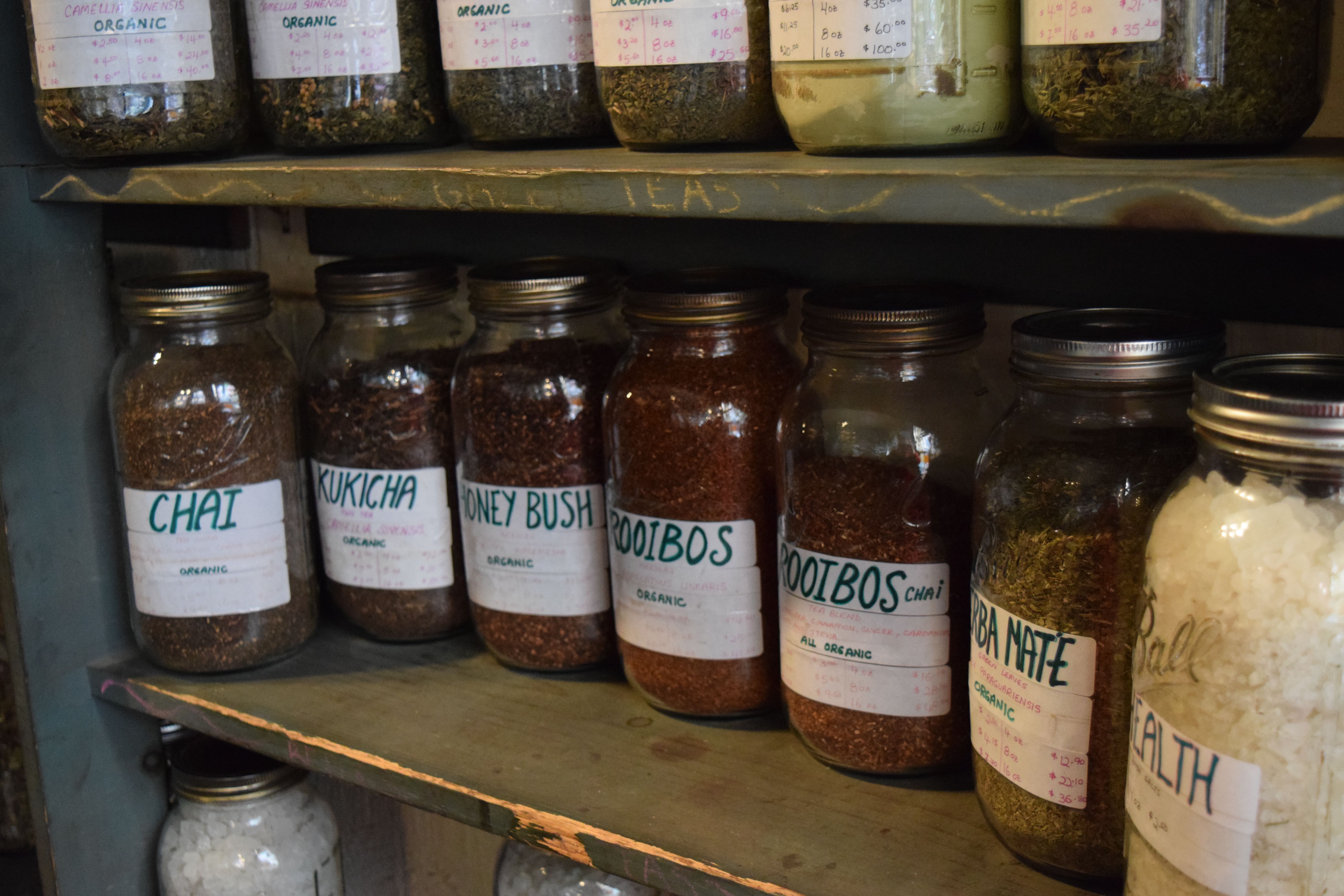In the East Village of New York City, filed away in a row of neat storefronts, a neon sign reads “CRYSTALS, MINERALS.” Packed full of sparkling gems and cut stones, Rock Star Crystals is the type of place you might expect to see a geologist or gem collector.
But stepping inside is a different story. Signs point customers toward chakra stones for energy healing, boxes of brightly-colored agate for creativity and strength, and even bundles of sage for purification. The store is one of many businesses that aims to appeal to a rising demographic: witches.
Although many Americans may connect the term “witch” to the Salem witch trials of the 17th century, practitioners of witchcraft connect it to a deeper historical legacy, tracing its way back to pre-Christian pagan religions. Wicca, one of the largest, formalized neo-pagan religions, was introduced to the United States in the mid-20th century.
The Wiccan belief system celebrates divinity in the Earth and nature and revolves around a set of rituals and practices that align with the seasons and phases of the moon. “Witch” is often used as an all-encompassing term: although some witches are Wiccan, others identify as “Pagan” or simply as non-denominational witches.
According to the American Religious Identification Survey, between 2001 and 2008, the number of Wiccans increased from 134,000 to 340,000. The number of Pagans followed a similar trend, increasing from 140,000 to 340,000. More recently, the Pew Research Center’s Religious Landscape Study, conducted in 2014, estimated that 0.3% of the U.S. population, close to 1 million people, identified as Wiccan or Pagan.
Though Wiccans still comprise the majority of self-identified witches in the United States, many practitioners identify as generalized or “eclectic” witches, adapting their beliefs from a variety of sources and traditions with a focus on the natural world.
Dr. Helen Berger, professor of women’s studies and sociology at Brandeis University and author of several books on witchcraft, including “Teenage Witches: Magical Youth and the Search for the Self,” argues that there has been a marked increase in non-denominational witchcraft, citing the survey data she collected for her books.
“When I gave my first survey, the number one spiritual path, sect, denomination, whatever term we want to use of contemporary paganism, was Wicca,” Berger said in an interview. “Now, unsurprisingly, it's eclectic. More people practice alone.”
Deborah Blake, a Wiccan high priestess and author of books on modern witchcraft, such as “Everyday Witchcraft,” echoes this sentiment.
“Witches in general are sort of slowly veering away from the strictly wiccan, and going more towards 'I would consider myself to be an eclectic witch now,' which values a little bit of everything,” Blake said.
The increase in the number of self-identified witches in the United States has greatly affected businesses like Rock Star Crystals. Lauren Robertson, a manager at Rock Star Crystals, sits at the front of the store, tucked behind the glass display cases housing the more fragile and expensive items. Customers come to her with questions: from technical queries to metaphysical complaints, she answers them all without missing a beat.
A practicing Wiccan herself, Robertson has seen the shop transform from a gemologist warehouse to a haven for witches and other spiritual seekers.
“I would say my bosses maybe were a little hesitant to go in that area, at first,” Robertson said. “They didn't really feel super connected to crystals on a spiritual level.”
After years of operating in a tiny second floor walk-up, Rock Star Crystals moved to its current location, a more prominent street front property.
“Since we were so small before—we were in an intimate location—I would say our clientele was more gemologists, geologist, people who study gems and minerals,” Robertson said. “But we've grown into more of a metaphysical focus, we're trying to incorporate more metaphysical memorabilia. We're trying to kind of have more of an outreach to those communities.”
Many of these new customers are influenced by popular culture or celebrity endorsements of crystals. The singer Adele was one of many celebrities to reveal that she utilizes crystals, stating during a concert at the O2 in London that she uses the crystals for luck during her vocal warm ups.
“When Adele mentioned carrying crystals on her person, I think it was in one of her award speeches, she mentioned it,” Robertson said. “And suddenly people were asking, 'well, what are you talking about, carrying crystals on you? What does that mean?’ I think when that kind of craze started coming out, a lot more customers started coming in, and a lot of people wanted to know more about the crystals.”
A few blocks away, another shop is feeling the effects of the witchcraft boom. At Flower Power Herbs, Lata Chettri-Kennedy sits at a tiny desk dwarfed by the tall shelves packed with four jars of dried herbs. A long-time herbalist and witch, Chettri-Kennedy has been running her shop for 26 years.
Recently, business has been booming. A line forms in the store, people packing into the cramped space, asking for herbs to treat issues like boredom, anxiety, or indigestion. There doesn’t seem to be a “typical” customer: they vary in age, ethnicity, and gender.
“We get all sorts,” Chettri-Kennedy said. “We get young kids because it's cool to be an herbalist or a witch. We get older people who actually have experience in it because normal pharmaceuticals didn’t work for them. We have people who have come off of a lot of antidepressants. We have people with chronic degenerative diseases that haven't been helped. We have people who are into herbalism because it's cool. We have a lot of famous people just coming to visit just because they're ‘woke’ or something. I'm really grateful for that."
She laughs, “we like famous people.” Chettri-Kennedy sees her herbalism and witchcraft as intertwined, tying herself to the legacy of female healers throughout history, many of whom were labeled “witches” due to their advanced medical knowledge.
“Witches were the people who were the serfs, healing the populace while the noble people would be healed by the church,” Chettri-Kennedy said.
“The information that the wise women, the herbalists, the witches were getting was gleaned from watching the animals, being out the field and dealing with childbirth and death and men coming home with gashes and war wounds. And they learned about the plants and they probably had more information than the priests, and that’s when they got maligned because they were associated with the devil, because how else did they have this information? And so they were like persecuted and murdered by the masses.”
Despite the historical roots of herbalism and pagan practices, Dr. Berger traces the origins of the neo-pagan movement to the 20th century.
“The movement really took off in 1960s,” Berger said. “There were some earlier renditions of it, but really it takes off as part of a counterculture, and it has several aspects that led to it spreading widely. One is it's very individualistic. It’s each person having a direct relationship with the divine. It's seen as an earth based religion, its connection to the Earth, going back to a more natural pre-capitalist way of living that is seen as more genuine and more environmentally concerned.”
Dr. Berger’s research shows that people who identify as witches tend to be more politically active, especially on environmental issues.
“On those areas that they care about, they're more active,” Berger said. “They're more likely to vote, to contact their representatives, both local and national, to work for a candidate, than other Americans.”
Sarah Lyons, witch and author of “Revolutionary Witchcraft, a Guide to Magical Activism,” ties her personal spiritual practice to her environmental activism.
“I think for me, I love that some of the work that I do is centered around the environment and climate change and climate justice,” Lyons said. “And that comes from the fact that, to me, I can't claim that I'm a witch and not defend the earth when it's under attack, putting it simply. And I think that the reason I focus so heavily on eco-socialism as my activism is because I don't think that you can separate out climate change from the host of other issues that we're currently fighting like. I think because of capitalism, all of this stuff is sort of wrapped up together. It makes it hard to impossible to separate out all of these issues.”
Witchcraft has historically been tied to counterculture movements, shifting away from the status quos of Christianity, capitalism, and a patriarchal society. However, with the rising popularity of witchcraft and the prevalence of earth-based spirituality in popular culture, the role of witches is changing. For businesses like Flower Power Herbs, there’s a fine line between counterculture and mainstream, keeping your products accessible to everyone while also attracting new, trendier clientele.
“I can't complain because business is booming, and herbalism has become more mainstream, so I really am so grateful and happy about that,” Chettri-Kennedy said. “But for us to maintain a flow of clients that are from all demographics, we have to really struggle. We've not changed our prices for all these years, but sometimes you have to. With this overflow of people getting into herbalism, things are starting to go extinct. There’s a lot of plants now on the endangered list that we used to sell.”
Nothing reflects this fine line between authenticity and gentrification more than the East Village itself.
“It used to be like an art colony,” Chettri-Kennedy said. “The village was full of artists. You could go see five bands in one day, like everybody was in a band, or everybody was an artist. Now there's no bands, it’s totally different for me growing up here. Creatively it's become a different place. They're a lot more rich people who make a lot of money who can afford to pay like $5,000 for two bedroom apartment. And the people who used to live in those two bedroom apartments had to move out.”
At Rock Star Crystals, however, wealthy, trendy clients pose no problem. “I've recently seen an increase in businessmen, people who want citrine and green aventurine and jade, all ones that are associated with prosperity and wealth, good luck, new beginnings, stones that are more associated with business,” Robertson said. “I get a lot more clientele that maybe I wouldn't have expected to come in. You know, guys in suits that are looking for something for their office that they will also promote more prosperity in business."
But both shops have one thing in common: they want people to engage with witchcraft in their everyday lives.
“At the end of the day, it's a shop, and we encourage people to look and to touch and have an experience,” Robertson said. “We try to encourage that even beyond when you leave the shop. We want that stone to mean something to you when you leave. We don't want it to just be a piece that takes up space for you. We want it to be something that feels like a friend.”


